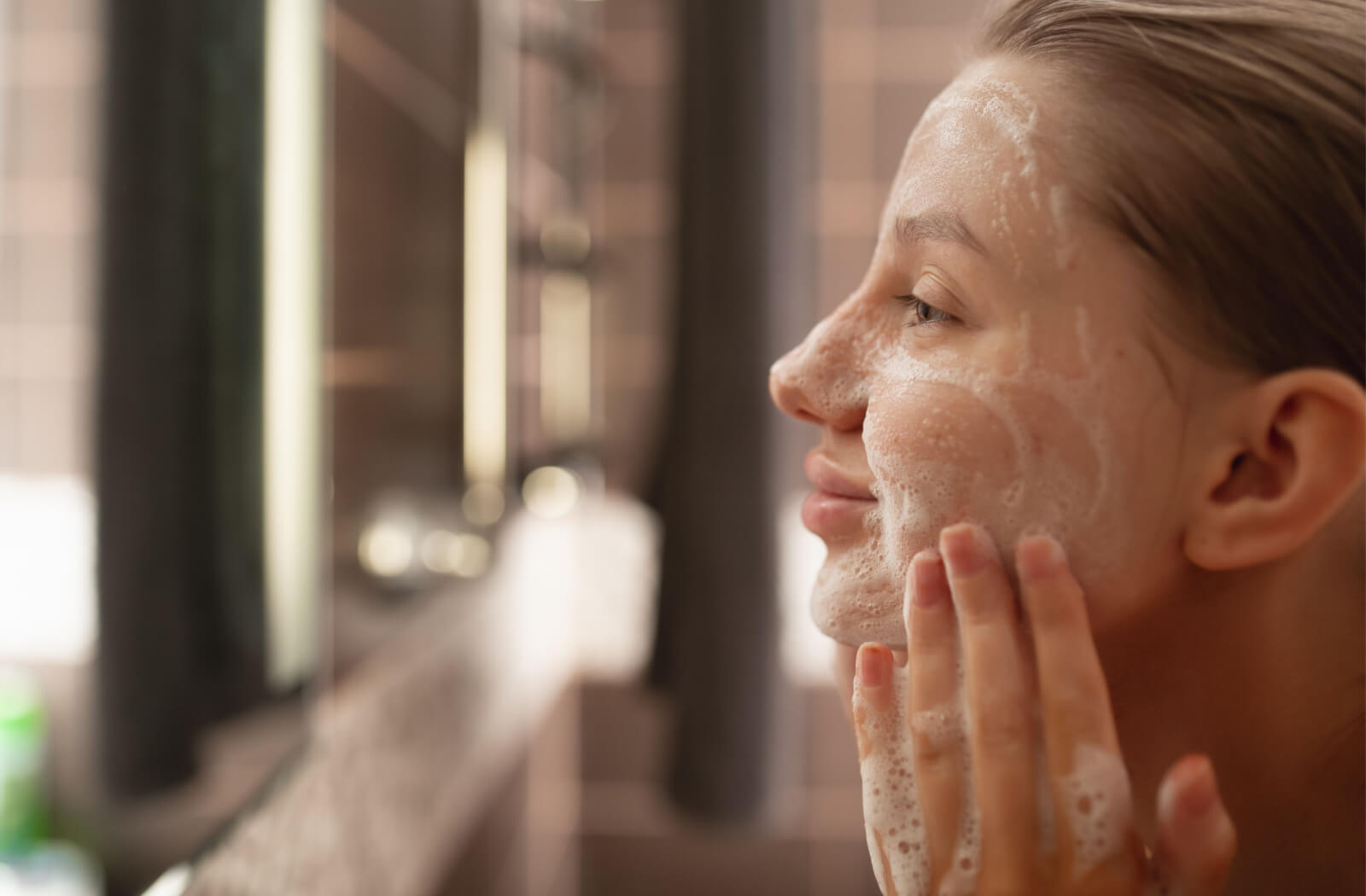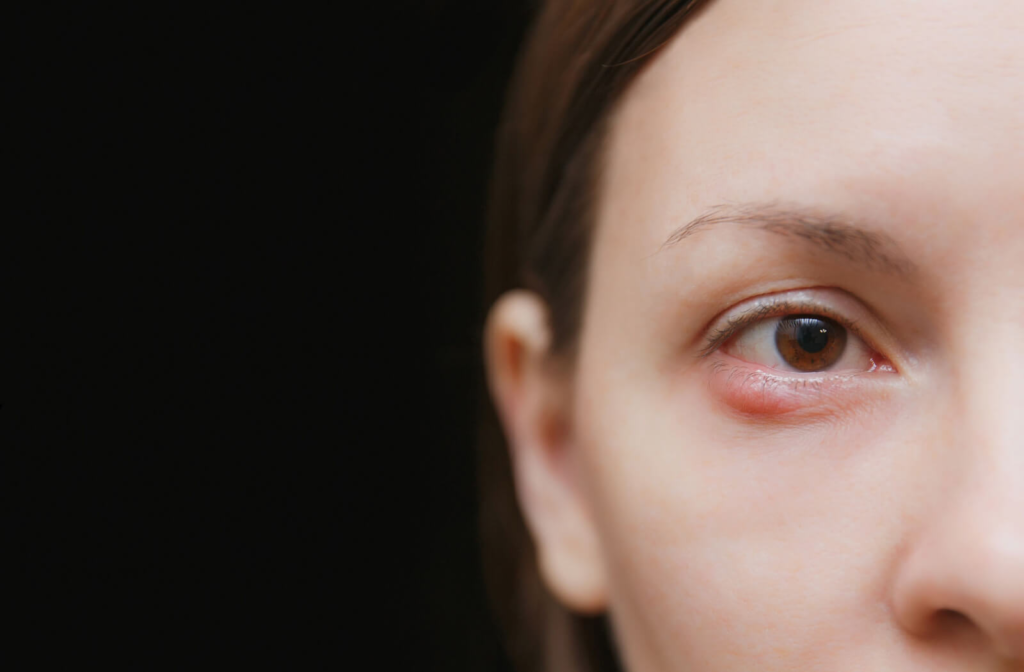Looking in the mirror and discovering a noticeable red bump on your eyelid usually isn’t the first thing you want to see in the morning. Not only does it look irritated, but it’s painful too. You may want to cover it up and apply your standard eye makeup products, but wearing makeup with a stye can cause your infection to last longer and lead to more discomfort.
The doctors at The Eye Gallery can assess your stye, prescribe antibiotics if needed, and treat the underlying cause of your stye to keep them from coming back.
What Is a Stye?
What Causes Styes?
A stye is a swollen, painful lump where bacteria are trapped, causing an infection. You can develop a stye when an oil gland or hair follicle on the lash line becomes clogged with dead skin cells, oil, or other debris.
They often look like a pimple—they’re often red with pus that can appear similar to a whitehead. Styes can vary in size and appear on either the outside edge of the lash line or on the inside of the eyelid.
- External styes: these styes are more common, and form in the eyelash follicle or sometimes in a sebaceous gland.
- Internal styes: most internal styes begin in the meibomian glands and push into your eye as they grow, making these rare styes more painful.
Symptoms of a Stye
Styes can develop slowly, with subtle discomfort as you blink, before transforming into painful, red bumps. Some other symptoms of a stye you can expect to experience can include:
- Yellow discharge
- Sensitivity to light
- Sensation of a foreign particle in the eye
- Tenderness
- Gritty sensation
- Watery eyes
- Crust buildup
- Redness and swelling
Risk Factors for Developing a Stye
Anyone can develop a stye, and it’s often caused by a typically harmless bacteria that live on your skin: Staphylococcus. Once the bacteria get trapped in a gland or eyelash follicle, you can experience an infection.
Several factors can heighten your risk of developing a stye, including:
- Eyelid inflammation, or blepharitis
- Skin conditions like rosacea
- Diabetes
- Rubbing your eyes
- Meibomian gland dysfunction (MGD)
- Improper contact lens care
If you’ve had a stye before, you’re at higher risk of getting recurrent styes without taking precautions.
How Long Does A Stye Last?
Styes can typically last anywhere from a few days to up to two weeks from formation to fully healed, however most cases only last about a week. The healing time of a stye is typically the same with or without treatment, but there are treatment options available to help prevent the stye from getting worse or spreading. It’s important to keep the area clean and avoid touching the area. Warm compresses can also help keep healing time to a minimum.
If there is no improvement in the first week, be sure to contact your eye doctor as this could be a sign of something more serious.
Can You Wear Makeup with a Stye?
Wearing makeup with a stye isn’t recommended. Many styes can heal naturally, but makeup brushes, mascara, and eyeliner can become cross-contaminated, extending your stye’s healing time.
In addition to the bacterial risk, cosmetics can lead to further irritation. As tempting as it may be to try to cover your stye’s redness with concealer, brushes, sponges, and other applicators can cause uncomfortable friction and added irritation.
Products may also get trapped on the eyelid, clogging up the follicles even more, preventing your stye from healing as best it can.
Can Makeup Cause Styes?
Makeup can also contribute to developing styes. In applying eye makeup, applicators repeatedly touch the products and the eyes, causing bacteria to transfer between them.
While styes aren’t contagious, reusing the same contaminated products can reintroduce bacteria to your eyes, leading to recurring styes. If you don’t have a stye, but there’s bacteria on your makeup applicators or products, it can cause one to form.
Removing your makeup at night is critical because products left on overnight can fuel bacteria production on the eyelids. Old makeup can also be a breeding ground for bacteria.
While many think they can stretch the expiration date on their cosmetics, eye makeup like mascara and liquid eyeliner should be replaced every 4 months. Solid eye pencils can last a little longer—up to a year.

How to Prevent Styes
To lower your risk of developing a stye, you should:
- Wash your hands
- Avoid touching your eyes
- Disinfect your contacts
- Discard your contacts after their recommended use period
- Treat blepharitis, rosacea, and MGD contributing to styes
- Double cleanse your face, beginning with makeup remover, followed by a face cleanser
When you already have a stye, you can make yourself more comfortable if you:
- Wash your hands frequently before touching your face
- Avoid wearing makeup
- Throw away old makeup
- Take a break from contact lenses
How to Treat a Stye
Styes vary from mild to severe, and you may require different treatments depending on your symptoms. You should visit our optometrists if:
- Your eyelids are swollen shut
- Blood or pus is leaking from the stye
- Pain and swelling are becoming more severe
- Your eyelids feel hot
- Your stye keeps returning
You may need prescribed antibiotic eye drops or ointment to help soothe the discomfort and clear the infection.
A warm compress is a key home remedy to help unclog the gland, liquefy the stye’s contents, and draw the pus to the surface. You can treat the stye with a warm compress 3 to 5 times daily for 10 to 15 minutes.
Eyelid cleansers can also remove debris and oil buildup on your lash line. You can ask our optometrists for recommendations or try diluted baby shampoo. However, you should absolutely avoid popping the stye—it can spread the infection and slow healing time.
Keep Your Eyelids Healthy
Styes are preventable. The common causes of styes—blepharitis and meibomian gland dysfunction—are manageable, and the doctors at The Eye Gallery can help.
With innovative treatment technology, lifestyle changes, and more, we can help lower your risk of developing styes. Contact us for an appointment to restore comfort to your eyes.




